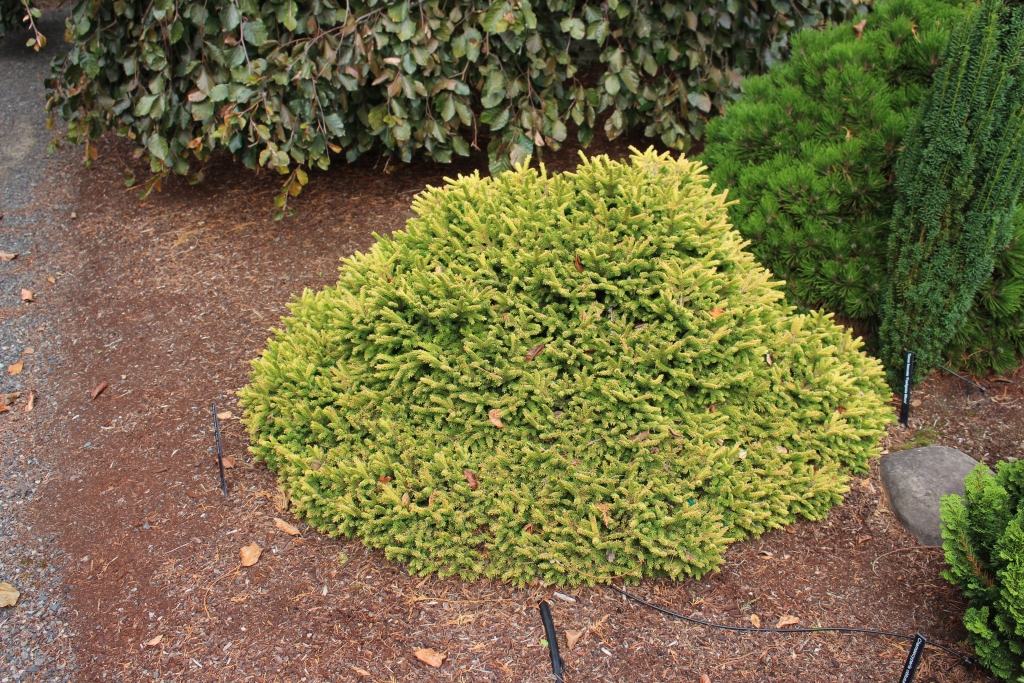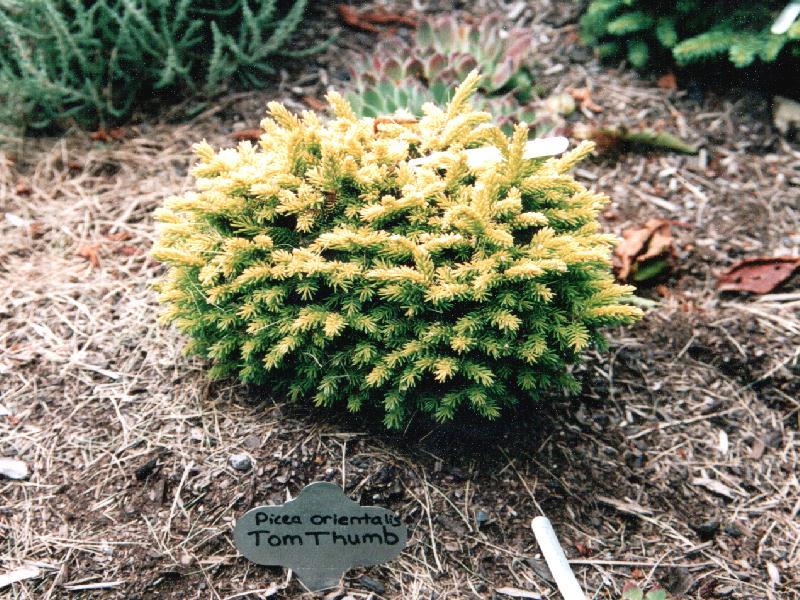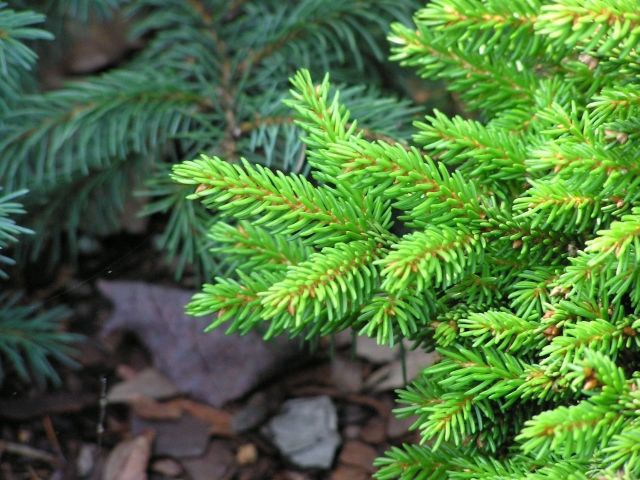Picea orientalis 'Tom Thumb Gold' is a miniature to dwarf selection of Caucasian spruce that grows as a flattened disk when young, becoming a very flattened cone with age. This dense, bright-gold cushion grows at an extremely slow yearly rate of about 1 inch ( 2.5 cm), mostly outward. After 10 years in the garden, a well-managed specimen will be about 12 inches (30 cm) wide and 6 inches (15 cm) tall. 'Tom Thumb Gold' presents itself best in a location receiving a half day's sun exposure at the most, preferably in the morning. Given too much sun, the foliage tends to burn, too little and the plant turns green.
This cultivar originated as a witch's broom discovered in the mid-1970s, when John Verkade Nursery, Neshanic Station, New Jersey, shipped specimens of Picea orientalis 'Skylands' to Halstead Wells, owner of Tom Thumb Nursery, in Nyack, New York. Wells noticed that one of the plants from Verkade Nursery had a small witch's broom in it, that measured 4 inches (10 cm) at the time. After discussion with John Verkade, Wells sent the specimen back to Verkade Nursery in order for them to bring the new dwarf selection into production.
Click on this link to view a document by former ACS President, Frank Goodhart, that details the history and process of establishing this unique and historic cultivar.
Verkade Nursery provisionally named it [ Compacta Aurea Tom Thumb ], and occasionally [ Tom Thumb W/B ]. Later Bob Fincham modernized the name into 'Tom Thumb Gold', a name which prevails to current day. This plant is often seen in the nursery trade with the abbreviated cultivar name, 'Tom Thumb,' a commercial name initiated by the nursery industry apparently to save time and money on plant tags.
'Tom Thumb Gold' was one of two selections made in 2007 for the ACS Collectors Conifer of the Year program.





